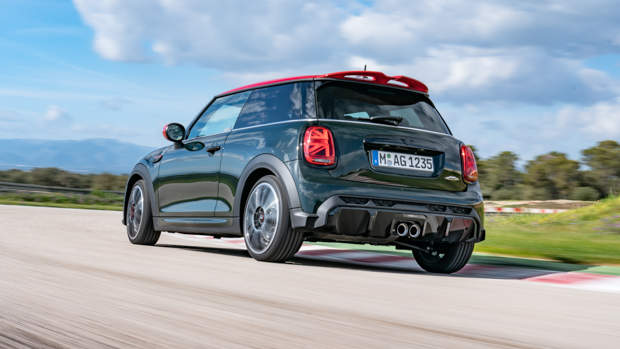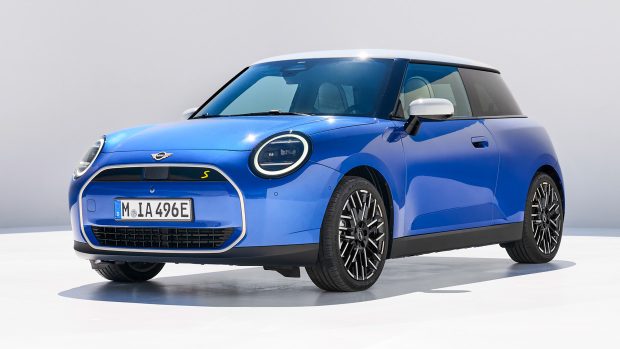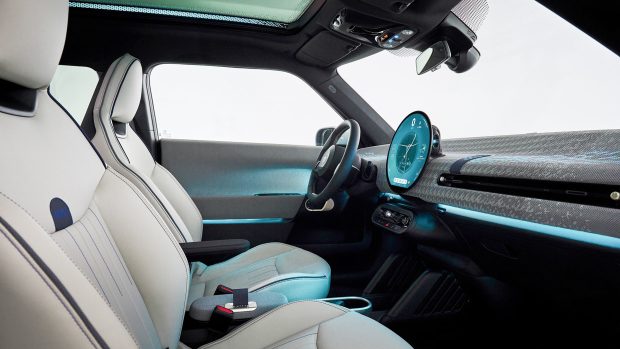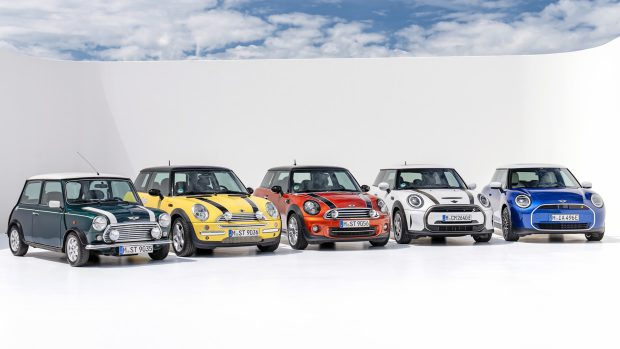-
Car Reviews
- All reviews
- Midsize SUVs
- Small cars
- Utes
- Small SUVs
- Large SUVs
- Large cars
- Sports SUVs
- Sports cars
- Vans
Latest reviews
- Car News
-
Car Comparisons
Latest comparisons
- Chasing Deals
Three and five-door Minis to get end-of-life design realignment but not an all-new model architecture retirement gift
Mini’s final generation of combustion-powered three and five-door hatch models are set to receive a makeover before retiring, but not the complete platform overhaul initially anticipated.
While the latest electric Mini Cooper E and Cooper SE models are embracing pure electric power with an entirely new architecture, the F55 and F56 generation Minis are opting for a less extensive refresh as they near the end of their lifecycle.
It has been revealed that petrol-powered Minis will undergo a transformation to closely resemble the electric version that recently debuted in Munich, however, this transformation will be accomplished through a reskin and an interior revamp of the existing model, despite the introduction of new model designations F66 and F65.
When questioned about whether the facelifted Mini would continue to utilise a different platform compared to the new electric Mini Cooper, Mini’s Head of Design, Oliver Heilmer, replied, “Yes, exactly. That’s the point.”
“There is a combustion platform with different areas, and there is a tunnel for the exhaust pipe, so obviously this area will be different. But from a design perspective, we say there is no difference.”
This implies that the combustion-powered Mini three and five-door models will retain their UKL platform instead of adopting a new architecture from another series within the BMW Group. With Mini’s all-electric lineup scheduled for 2030, this is likely to be their last iteration on this platform.
Heilmer confirmed that the company would essentially produce two entirely distinct B-segment cars that share the same appearance but feature radically different drivetrains.
However, despite the continuation of the long-established Mini underpinnings, an update will align the aesthetics of petrol-powered Minis with the electrified range.
“Yes, it might be different from the electric-based model, but they are the same in terms of what we wanted to achieve,” said Heilmer.
“Designers may be able to spot the differences, but a ‘regular’ person wouldn’t notice at first glance.”
Heilmer explained that aside from minor proportional variances, the two mechanically distinct Minis would share many, if not all, of the defining features, including a range of new sustainable materials, a new circular central touchscreen, and design elements both inside and out.
“In terms of design, it’s the same design,” he emphasised. “You’ll find the knitted fabrics, a compact steering wheel, all of these elements will be present, but the proportions will differ.”
A substantial portion of Mini’s existing customer base is drawn to the models because of their retro design and the brand’s rich history of traditional Minis. However, another segment of customers seeks a more modern and contemporary Mini experience.
According to Heilmer, striking the right balance between the two is one of the most challenging aspects. Both electric and combustion Minis must evolve in harmony to maintain the brand’s integrity, regardless of the audience they cater for.
“Imagine if you created something extraordinary for the electrified version and then did something entirely different for the combustion engine model; no one would understand it,” Heilmer noted.
“All brands that have a strong heritage, as soon as you change something it leads to insecurity for some of our customers. As a designer you want to jump ahead but what if we did exactly the same as the past?
“First of all it doesn’t feel good and secondly, even worse, you might die with the remaining customers. When you’re afraid to change something it’s the worst thing that can happen”.
Latest news
About Chasing cars
Chasing Cars reviews are 100% independent.
Because we are powered by Budget Direct Insurance, we don’t receive advertising or sales revenue from car manufacturers.
We’re truly independent – giving you Australia’s best car reviews.



